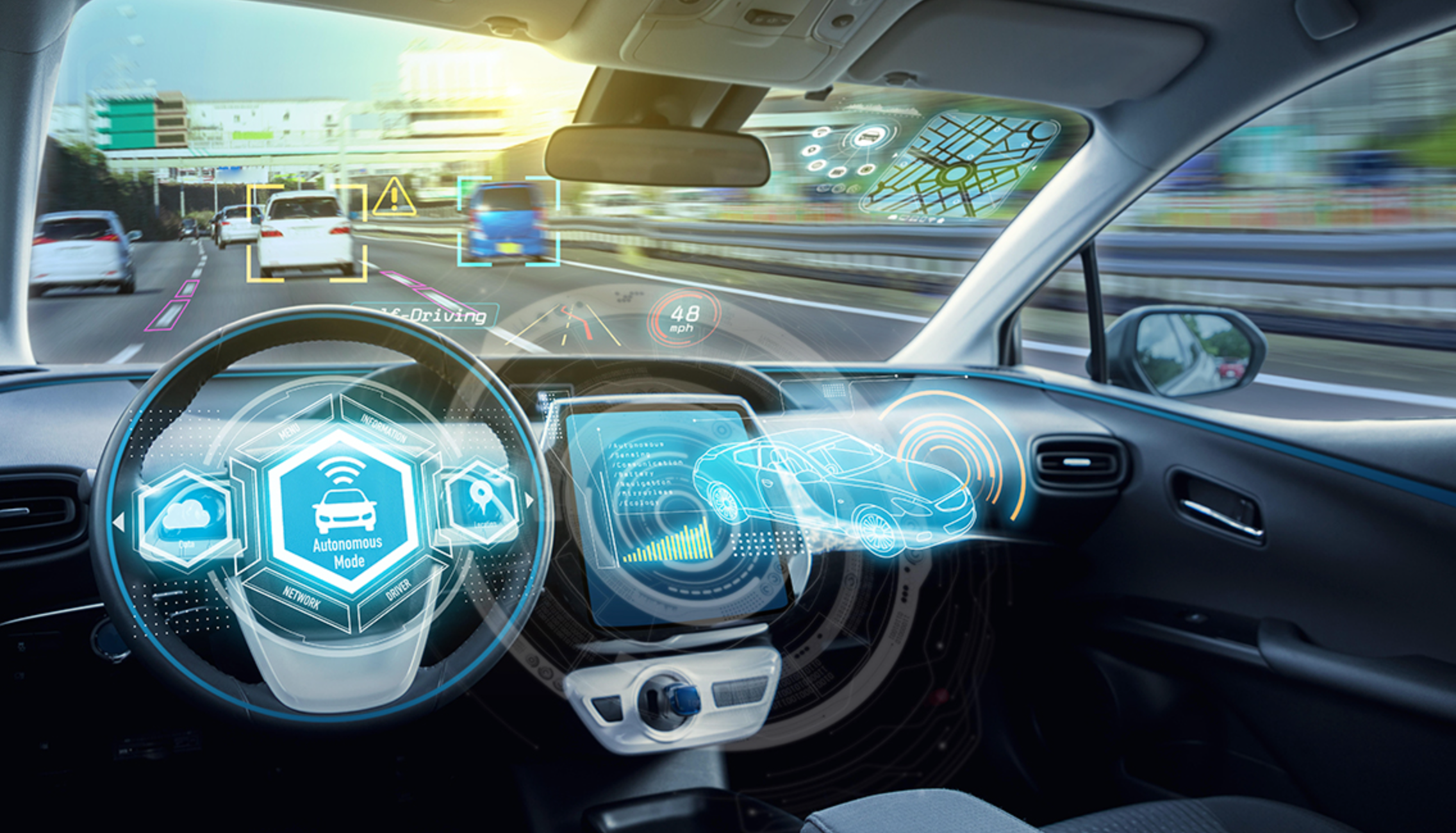Technology is taking over the world, and vehicle automation is fast becoming a space of focus. Through artificial intelligence (AI) and machine learning (ML), leading forces in the industry are pushing the bounds of technology in their endeavor to reach full automation. In the vehicle automation (VA) world, Elon Musk continuously pushes Tesla to reach new heights because he believes that full automation is possible. Advancements in automation are benefiting both the commercial and industrial sides of transport. Further, there’s a gap in the job market for experts with engineering and computer science backgrounds. Throughout this article, we will explore vehicle automation and its impact on the world we live in.
Table of Contents
A Cry Out for Experts
Vehicle automation is a relatively new field of expertise, with plenty of ground left to cover before we reach full automation. This means that budding engineers looking to make contributions to vehicle automation can study an online computer engineering degree with a reputable university like Kettering Global. On such courses, which can be taken with a specialism in vehicle automation, students will gain in-depth knowledge surrounding the current theories of robotics and computer engineering. Armed with a master’s in electrical and computer engineering, experts will easily land jobs with some of the top players including Amazon and Tesla. The vehicle automation industry is crying out for talent, and you can set to profit from this.
Autonomous Vehicle Developments So Far
Using AI and ML, technology has been implemented into vehicles to benefit all areas of the transport industry. These vehicles take AI and ML to improve their intelligence and understand human participation. With this tech, HD maps have surfaced with an ability to analyze maps and make logical decisions. The maps are groundbreaking and offer drivers the ability to read the road even further ahead. To make this possible, a series of high-quality cameras, sensors, and radar tech is used.
These HD maps give vehicles the power to self-drive. However, the efficiency of driving depends on the dependability of AI. To help us navigate this space, AI systems are ranked on a scale of 1 to 5. At the lower end of the scale, automation works with the driver controlling the majority of functions. With a 5, you’re looking at the car driving with zero input from the driver. Currently, Tesla has managed to score around a 2 on the scale. The global dream in the automation industry is to reach level 5, which Elon Musk has said to be harder than he first thought.
Manufacturers are ready to start implementing level 2 to 3 AI into their vehicles. However, the consumer market will stagger behind in acceptance of the tech, with 2030 set as the current projection. If the tech giants manage to achieve level 5 automation, they will struggle to get the masses on board. They will need to prove through rigorous testing that their tech is completely risk-free.
Most Recent Developments in Vehicle Automation
Tesla Supercomputer
We can’t have a list of recent developments in the VA space without including Tesla. The leading manufacturers in autopilot technology say that to achieve automation in their fleet, they need to process enormous amounts of data. To make this happen, they have a new supercomputer that Andrej Karpathy says is “the fifth most powerful in the world”.
Despite already having one of the most powerful computers in the world, which works to harness data from their fleet, they are pushing the boundaries even further. Currently, they are working on new tech dubbed “Project Dojo”. Although in the development stages, it’s said that the next phase in their supercomputer work will allow Tesla to unlock its full potential.
Long-Distance Trucks
The next big player in the VA race is Amazon, who are working hard to roll out their self-driving trucks. The e-commerce masters have commissioned tech startup Plus to deliver 1000 autonomous vehicles. As well as ordering the vehicles, Amazon has bought up a 20% share in the company.
In their drive to support the startup, the aim is to create safer conditions for long-haul truckers. Once the tech has rolled out, equipped trucks will be able to travel a staggering 1,000 miles (about 1,500km) per day. Further, the trucks will have an awareness of 360-degrees, which will make the roads safer for hardworking truckers.
Hidden Humans
Next up we have Ford, which is a household name in the auto industry. Their AI delivery tech is well underway, with tests already having taken place. Therefore, Ford is working on how to make automated delivery vehicles interactive with humans. In toying with this idea, they will create a normal van to look like an autonomous vehicle and place a hidden human inside. On the outside, lights will turn white, turquoise, and purple. These lights will communicate to other road users what the vehicle will do. For this research, Ford has teamed up with UK delivery company Hermes. When their van pulls up, customers will open the door and be guided through to their locker by sound and screens.
The outcomes of this research will play a vital role in the commercial space. Delivery companies need to understand how people will interact with their tech before it’s rolled out.
Breakthrough from Baidu
Our last mention in recent advances sees us visit Chinese tech company Baidu, which is in the process of launching a robo-taxi fleet. The program, dubbed Apollo Moon, comes from China’s top search engine providers. Despite dominating the internet space, the tech group has invested heavily in the automated driving space. Currently, they are aiming to introduce a fleet of 1000 by the end of 2023. This is a landslide victory for the tech company, that claims the vehicles will be the first manufactured autonomous vehicles made at an affordable price.
Automation Worldwide
Vehicle Automation is set to be a dominant market in America because of its solid history of auto manufacturers and the mass emergence of tech startups. Many companies have already completed tests in the US, with Apple Inc. testing self-driving cars back in 2020. Also, Cruise LLC has stretched the limits of its self-driving vehicles by extending the distance traveled before needing a driver. It’s not only US companies entering into the testing space, with Vietnamese manufacturer VinFast stating that they have been granted permission to carry out autonomous tests in the streets of California.
The next country to see wide growth from the VA industry in Asia and the South Pacific. The country has observed how successful America has been, and is looking to leading countries like South Korea, Japan, and India to lead the charge and dominate the market.
Manufacturers are taking the autonomous vehicle industry by storm, but it relies heavily on collaboration with large fleet companies. For example, Volvo has signed a partnership agreement with DiDi Autonomous Driving back in April 2021. The two entities will work together in testing DiDi’s self-driving fleet.
The VA industry is extremely lucrative at the moment, and giant software companies are clocking onto this. For example, Qualcomm Technologies Inc. and Veoneer Inc. agreed to a collaboration to deliver Advanced Driver Assistance Systems (ADAS) as well as autonomous driving solutions. Another well-known software company allying is NVIDIA, which has joined forces with Volvo. Together, they look to develop a decision-making system for commercial machines and vehicles. Toyota is also jumping in on the collaboration space by teaming up with Aurora and Denso to create mass-produced self-driving cars.
Industries Set to Benefit
Manufacturers and tech companies are hard to drive AI forward through the 1-5 scale. Once higher rankings are achieved, the hope is that collisions and fatalities will drop significantly. Through the combination of electric vehicles and AV, the environment is set to benefit greatly through a reduction in pollutants. To manage this network, traffic management systems will be set up to plan for traffic and speeds ahead of time.
The AV advancements are set to revolutionize the pay-as-you-go rideshare industry, with companies like Uber set to profit. For example, the use of AVs in their fleets will reduce their need for fuel and maintenance. Further, they may eliminate the need to use human drivers completely in the future.
We already know that the expansion of autonomous vehicles will have an enormous impact across the world. However, certain industries are set to benefit more than others. For instance, production companies specializing in eclectic vehicles will see an increase in demand. Manufacturers of electric vehicles will be called on to fulfill orders. The use of batteries in AV and electric vehicles calls for lithium and cobalt, which will need to be mined. Therefore, raw material producers will see a rise in profits. Finally, software and hardware developers including those involved in mapping, driver assistance, and ride-share platforms will see growth in their market.
Challenges and Risks
The technology behind AV is fantastic. However, it comes with its own set of risks and challenges. One of the most obvious challenges of the wide integration of AV is the loss of employment. Currently, the transportation and delivery sectors account for an enormous number of jobs. To combat this loss of jobs, there may need to be incentivized courses to help people upskill and find work in this technological world.
Another risk placed on the AV growth is cybersecurity. Using cloud networks to store data and control vehicles will open the doors for hackers to get in. To be accepted in the larger community, the tech minds will need to formulate a fool-proof plan to keep out unwanted guests. People won’t buy into a technology that puts them in harm’s way.
The American Automobile Association (AAA) conducted a study. The results showed that only 16% of their target would put trust in AV. For the most part, the issues that concern people the most are when it comes to adverse weather and other unpredictable conditions. After all, humans will be humans.
A final issue faced by the AV industry is the current laws and regulations. Currently, they are set up to account for humans driving. To allow for insurance to cover autonomous vehicles, regulations will need to change with the times.
The Future of Automation
The application of AV tech isn’t just to take lazy humans from A to B. Instead, full automation will be of huge benefit to the shipping and delivery industry. As the global pandemic taught us, there will be times when there aren’t enough trained people in jobs to supply demand. The switch from manual to AV is already taking hold, with the first authorization for an autonomous grocery delivery service being given by the federal government.
Autonomous vehicle technology is in its teething stages when it comes to rolling out, and it has faced huge setbacks. The race to hit level 5 AI has been pushed back, with Elon Musk endorsing its difficulty. With this in mind, we should begin to see slow-moving autonomous vehicles capable of short trips hitting the industry over the next five years. With this level of automation ready to creep into the market, it will only be a matter of time before manufacturers crack the code and achieve level 5 AI.
Final Words
Technology has advanced rapidly over the last decade, with autonomous vehicles being worked on across the world. With tech startups and leading manufacturers joining the race, there is an opening in the job market for innovative talent. Company giants including Tesla, Amazon, and Ford are all working on different areas of the industry including customer interaction, supercomputers, and long-haul truck efficiency. Luckily, the leading manufacturers are looking at VA holistically and are making groundbreaking partnerships with software companies like NVIDIA. Although the VA space is exciting, it comes with risks, including the loss of jobs and the fear of cybercriminal exploitation. While tech companies work hard to overcome these issues, the world will be slowly introduced to VA through short-distance deliveries. Who knows what the future holds, but it’s safe to say it’s an exciting time to be alive.


